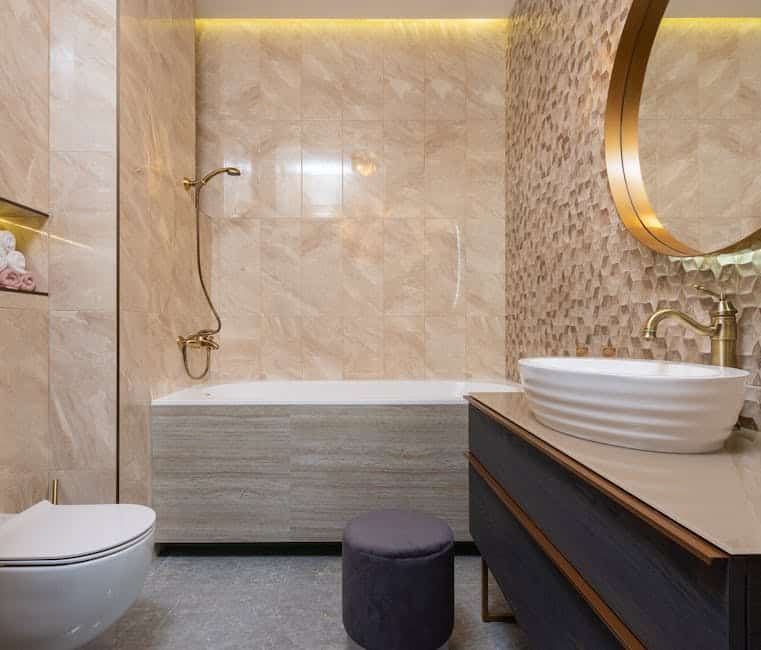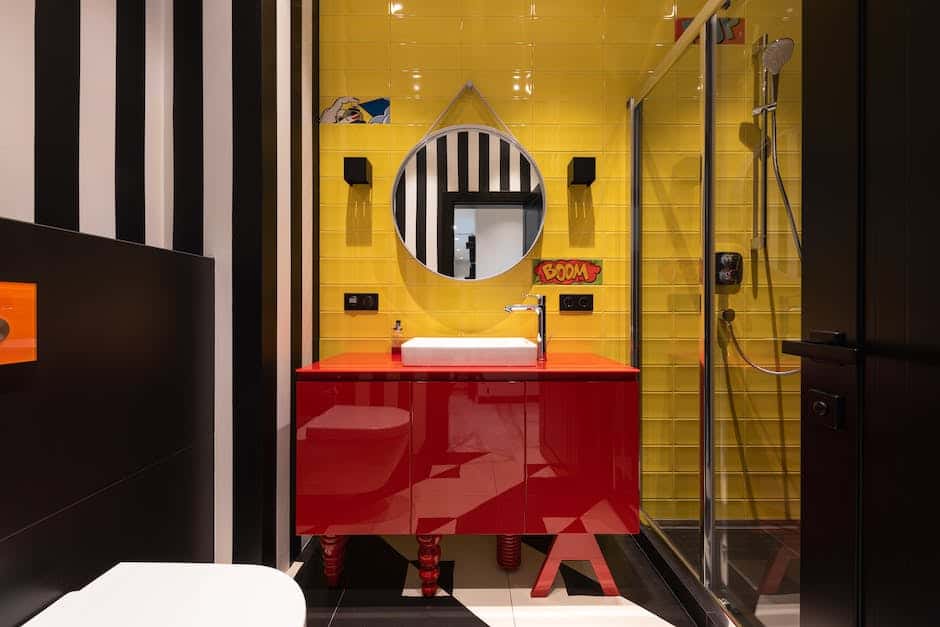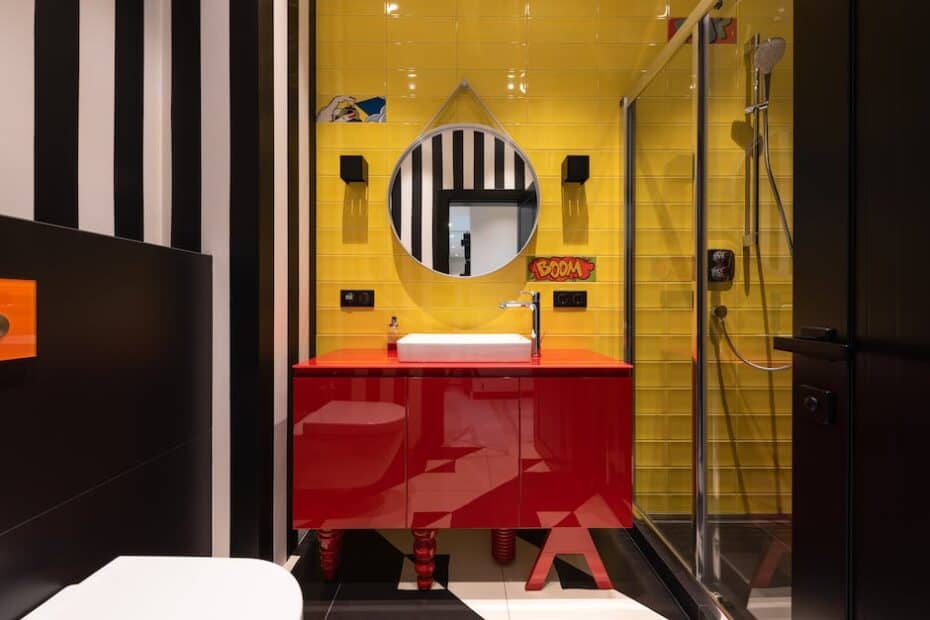The toilet and shower are two of the most important fixtures in any home – but can they share the same drain? It’s a question that plumbers get all the time, and the answer is… maybe. It depends on a few factors, including the size of your home and the strength of your sewage system.
A toilet and shower can share the same drain provided they are on the same level. If the toilet is higher than the shower, then they cannot share the same drain.
Table of Contents
Do showers and toilets drain to the same place?
Did you know that every drain in your home is connected to a pipe that moves used water from your house to a sewer in the street? That’s right, every toilet, shower, sink, washing machine, dishwasher, and anything else that uses water connects to one singular pipe. Pretty amazing, right?
A wet vent is a type of plumbing vent that is installed in a wet environment, typically used when plumbing a bathroom group. So yes, the shower can also be vented by the wet vent along with the toilet. There is one major stipulation when wet venting multiple fixtures when a toilet is one of them: the toilet must be the last fixture connected to the wet vent. This is to ensure that the water flowing through the wet vent does not back up and overflow into the toilet.
Are toilet and bathtub drains connected
If you notice sewage coming up through your bathtub, it is most likely due to a clogged sewer line. All the sinks, toilets, and tubs in your home connect to a single drain pipe that leads to the sewer line under your house. This drain line carries all wastewater and sewage away from your home to the city’s sewer system. If the line becomes clogged, sewage can back up into your home through the drains. To clear a clogged sewer line, you will need to contact a professional plumber.
If you are planning on moving your toilet to a new location, it is important to make sure that you have a water supply line that can reach the new location. One easy way to do this is to use PEX pipe, which can be easily connected to the cold water supply and run to the new location of the toilet.
How close can a toilet be to a shower?
This code requirement ensures that there is enough space around a toilet or bidet for people to use them comfortably. It also helps to prevent any accidents that could occur if someone was to trip or fall while using one of these fixtures.
All wastewater from your house is carried to the municipal sewer line by one main drain pipe. This pipe typically runs horizontally, but with a slight downward slope, under the lowest floor in your home. It will then either connect to the municipal sewer main or to the septic field.
Can 2 drains share a vent?
A common vent is a pipe that vents two or more traps. The traps can be at the same level or at different levels, as long as they’re on the same floor. This is a very simple concept that can be useful in many situations.
Venting is necessary for bathroom plumbing systems to prevent blockage. All pipes in your home, particularly for toilets, sinks, and showers, require proper venting. It protects the trap on the drain pipe. In addition, it helps you secure your wallet, fittings, time, and even the pipe itself.
Does each toilet need its own vent
A vent is a pipe that helps to carry air and waste water products out of your home. The air that is in the waste water products help to keep the water in the traps from becoming too stagnant. Each of the fixtures in your home that are supposed to be connected to a trap should have their own vent so that the air can escape and the water can flow out properly.
When the toilet is flushed, the rush of water into the sewer is pulling air through the tub drain causing the gurgling noise. First, make sure the plumbing vents extend above the roof. In cold weather, simply run hot water to the sinks and look outside to see if steam is coming out of the roof vent pipes.
Why is my toilet gurgling when I take a shower?
There are a few possible reasons why your shower and toilet might be sharing a drain line and vent stack. One possibility is that your home was built with a wet venting system, which means that the drain line for your shower is also used as a vent stack for your toilet. If there is a clog or blockage in either the drain line or the vent stack, air can be forced up or down the toilet, causing the gurgling noise you’re hearing. Another possibility is that your drain line and vent stack are connected but not vented properly. This can also cause a gurgling noise as air is forced through the pipes. If you’re not sure what is causing the issue, it’s best to call a plumber to take a look.
If your toilet backs up into your shower or bathtub, it can be a reminder that the two systems are connected. If this happens, you should call a plumber to come and take a look. If you have a blockage in your main sewer line, then you might need to have it cleaned out.
Are shower and toilet plumbing connected
Grey water is water that has been used for showering, washing dishes, or laundry. Black water is water that has been used for toilet waste.
According to Vastu Shastra, the Flush Toilet or the Commode should have a place where the user faces any direction but never West or East Therefore, the best place to have the Flush Toilet is either Southeast or Northwest facing North or South.
Can shower waste go into drain pipe?
It is important that wastewater is not allowed to flow into the surface water drain, as this can contaminate the water supply and cause environmental damage. If your property is not on a combined drains system, you will need to have separate drain connections for wastewater and rainwater. It is the responsibility of homeowners and landlords to check that they have the appropriate drain connections in place.
Approximately 08m by 18m is the minimum size you’ll need for your en-suite. This is because you’ll need to have enough space for a basin, toilet and shower. Keep in mind that the bathroom door will need to open outwards, so plan accordingly.
Conclusion
No, a toilet and shower cannot share the same drain. The toilet drains waste water and the shower drains waste water and clean water. If they shared the same drain, the clean water from the shower would become contaminated with waste water from the toilet.
If the toilet and shower are on the same floor, they can share the same drain. The drain for the shower will be higher than the drain for the toilet, so the water will flow towards the shower drain. If the toilet and shower are on different floors, they cannot share the same drain.
